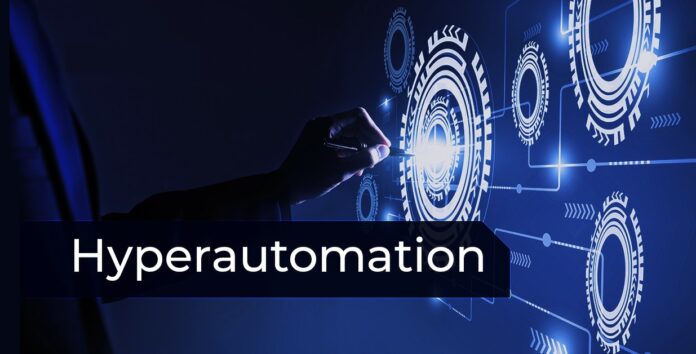What is Hyperautomation?
Hyperautomation is a process consisting of increasing the automation of business and financial management processes by introducing Artificial Intelligence (AI). Also we use Machine Learning (ML) and Robotic Process Automation (RPA).
Hence,it is an infrastructure of advanced technologies that are in use to scale automation capabilities in a particular organization.
Hence, AI programs can provide automation for low-value tasks, freeing up engineers to perform higher-value tasks.
So artificial intelligence and machine learning both are in use in engineering.
Hence,by using machine learning to discover patterns in the data, machines will be incredibly important to help with engineering judgment and other skills development.
A combination of digitization, connectivity and Artificial Intelligence(AI) is known as Hyperautomation.
“Hyper-automation is the mixture of automation technologies existing in order to expand & increase human capabilities by allowing organisations to automate more complex work. Hence, this is done with the help of robotic process automation (RPA) at its core, with artificial intelligence (AI), ML, process mining, analytics, and other advanced tools. hence, this is done to strengthen the ability to automate work”. As defined by Gartner:
The Path to Hyperautomation
A simple automation undergoes the process of task automation using a set of rules and RPA & Event Processing techniques and leads to the next stage. Because of process automation & Conversational UX i.e., Chatbots, Virtual assistants like Alexa, Siri, Google assistant it goes to third phase.
Then a number of certain operations & AI or ML techniques are in performance in order to achieve the Hyperautomation.
The Growing Role Of AI And Machine Learning In Hyperautomation-Transitioning to Hyperautomation – Key strategies
Planning the Hyperautomation journey –
A business wouldn’t be able to succeed without a strategic plan in place, so would any idea or a process, same applies with Hyperautomation. Initially, a blueprint is to be put in place at the beginning of it. Hence, it is essential to define the business objectives, its outcomes, budget and understand what processes are to be work upon, in what priority, the scope of it.
Revenue, cost, and risk play a vital role here. Because of these, the process that you are thinking of optimizing would it reduce the cost by improving its efficiency may be a better option. Hence, all the three are to be well define at the start of it.Next step is to optimize the process.
Applying the right combination of tools and technologies-
Once our strategy is ready, it is time to set a target in order to achieve goals. For this pupose, one needs to identify the tools and technologies. These can be tools that are closely aligned to our roadmap and would get us the output as per the defined objective. Tools that simplify, measure, and manage the processes are to be put to use. DigitalOps is one such process framework that addresses different stages of process automation.
Augmenting with intelligence, Artificial Intelligence, now is the part where “intelligent” automation comes to play, time to augment human capabilities. This is done to achieve end-to-end process automation.
The Growing Role Of AI And Machine Learning In Hyperautomation-Key components of Hyperautomation
- Robotic process automation.
- Intelligent business process management.
- Artificial intelligence.
- Advanced analytics.
- Return on Investment.
- Integrating software and processes.
- Improving machine learning.





